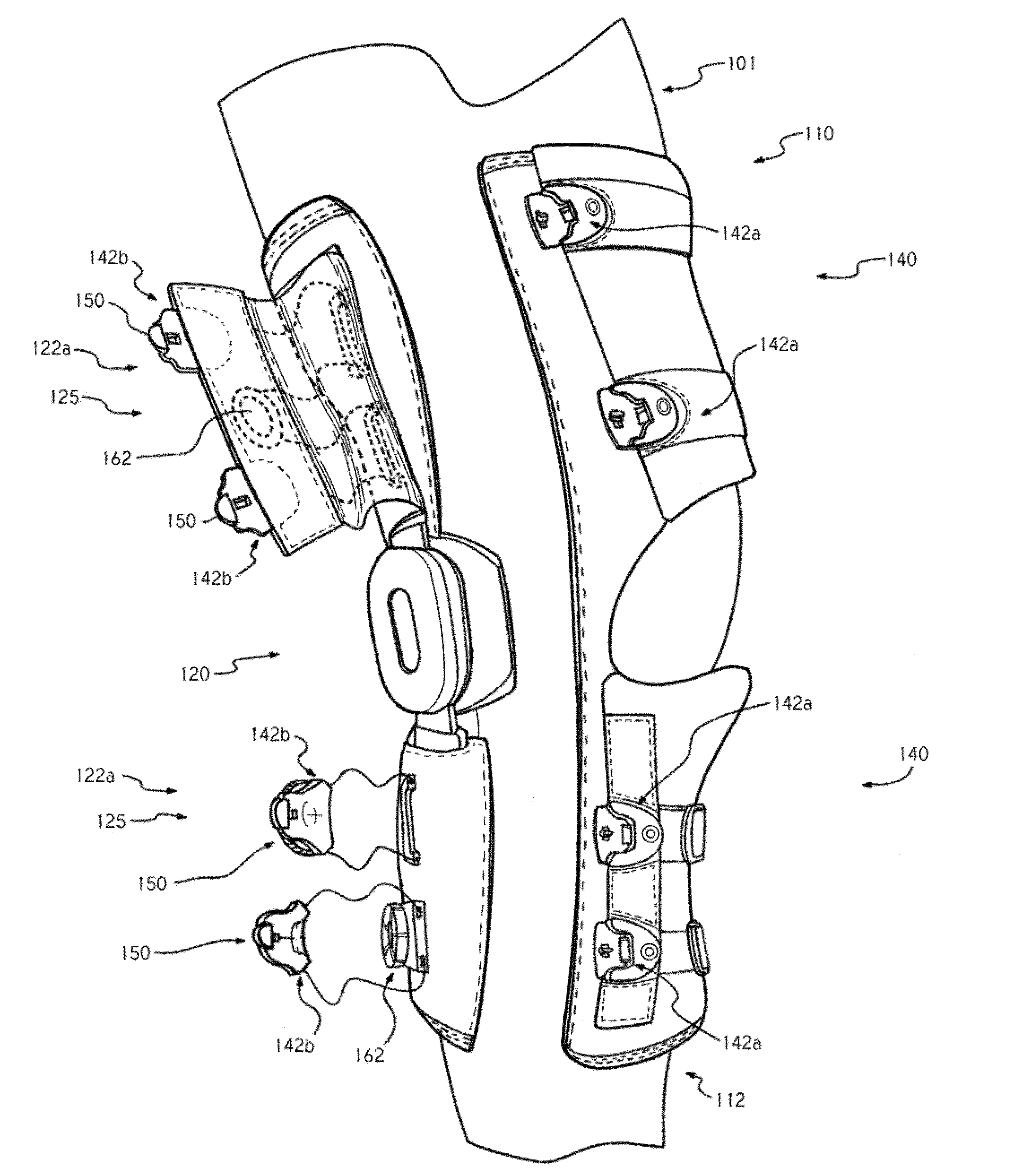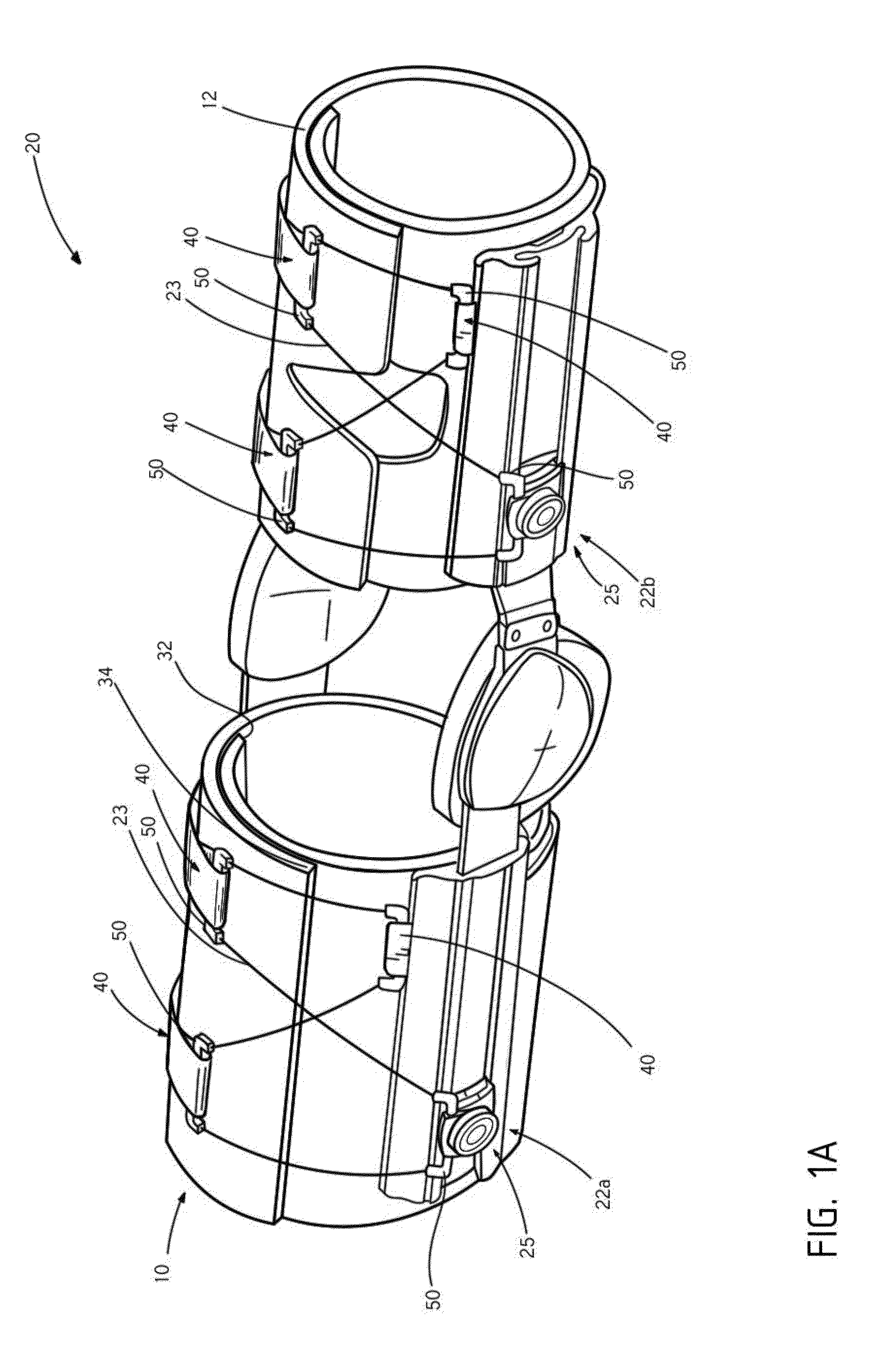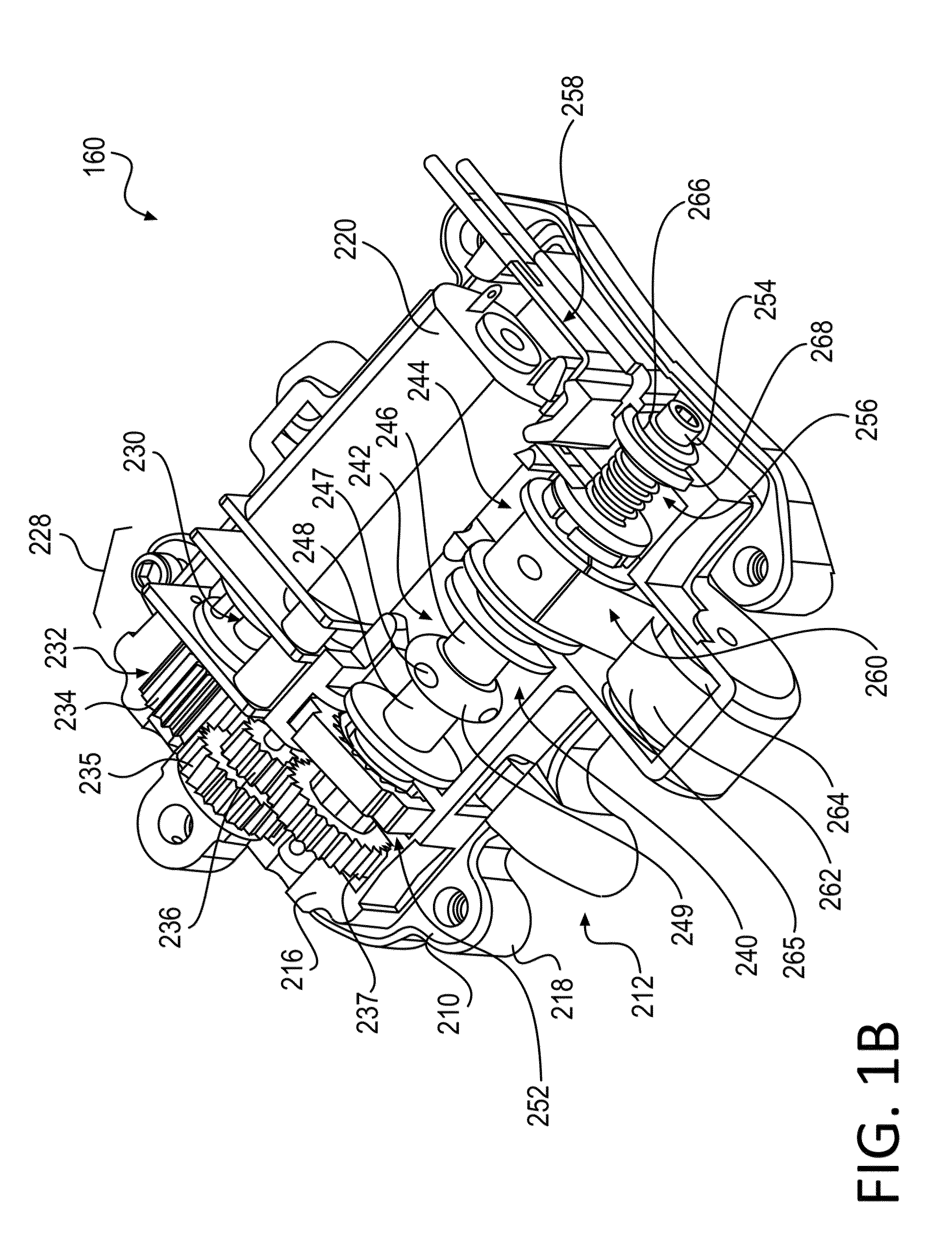Systems, methods, and devices for automatic closure of medical devices
a technology of medical devices and automatic closure, applied in the field of medical braces and devices, can solve the problems of patients' difficulty in properly fitting such braces, and achieve the effect of promoting repetitive or cyclical movement and therapeutic healing of the limb
- Summary
- Abstract
- Description
- Claims
- Application Information
AI Technical Summary
Benefits of technology
Problems solved by technology
Method used
Image
Examples
embodiment 90
[0046]In some embodiments, the brace may be used to assist in pumping blood back to the heart from one of the extremities (i.e., legs, arms, and the like), or used for pumping other fluids throughout the body. Sensors may be coupled with pneumatic pads, gel pads, and the like, that are tensionable and / or inflatable to provide local pressure and thereby force the blood or other fluids back toward the heart. The sensors may monitor the local pressure within the brace so that blood pumping assistance may be monitored. Such embodiments may be part of an edema management program to keep fluids flowing within the body and prevent fluids, such as blood, from pooling in a localized area. In a specific embodiment, the sensors may be part of a sock that the patient wears to assist in pumping blood back to the heart from the leg. In some embodiments, the motorized closure device may be replaced with nitinol wires or barrels / strips that wind around the brace and that are activated (i.e., electr...
embodiment 700
[0093]Referring now to FIGS. 7A-G, illustrated are embodiments of various ways in which tension may be adjusted with a motorized closure device. The tension adjustment mechanisms described in FIGS. 7A-G provide easy control for patients that may be disabled or otherwise dexterity challenged. FIG. 7A illustrates an embodiment 700 of a brace 703 having a motorized closure system 704 that is used to tension a lacing system 706 as described herein. As shown, brace 703 may be configured to fit around a waste of the patient. A dial 702 may be positioned on a front side of the brace to provide easy access to a patient. The patient may operate the dial 702 to increase and decrease the tension of the lace of lacing system 706 as desired. Dial 702 is communicatively coupled with motorized closure system 704 such that rotation of dial 702 provides manual input to the motorized closure system 704 to increase or decrease the lace tension.
[0094]FIG. 7C illustrates another embodiment of a brace 71...
first embodiment
[0098]FIGS. 8A-H illustrate various embodiments of devices, systems, or controls that may be used to automatically open a brace to allow a patient to easily don or doff the brace. FIGS. 8A and 8B illustrate a brace that includes a motorized closure system 802, such as those described herein. The embodiment also includes a first lacing system 804 and a second lacing system 806. The first lacing system 804 is used to tension the brace about the patient's body part as described herein. The second lacing system 806 is used to open the brace so as to allow the patient to place the brace over a body part, such as over a wrist as shown in FIGS. 8A and 8B. The first lacing system 804 may traverse across the brace and through one or more guides as described above such that when tension is applied to the lace, the brace closes about the patient's body part. The second lacing system 806 may be coupled with the brace on opposite sides of an opening 805 such that when tension is applied to the s...
PUM
 Login to View More
Login to View More Abstract
Description
Claims
Application Information
 Login to View More
Login to View More - R&D
- Intellectual Property
- Life Sciences
- Materials
- Tech Scout
- Unparalleled Data Quality
- Higher Quality Content
- 60% Fewer Hallucinations
Browse by: Latest US Patents, China's latest patents, Technical Efficacy Thesaurus, Application Domain, Technology Topic, Popular Technical Reports.
© 2025 PatSnap. All rights reserved.Legal|Privacy policy|Modern Slavery Act Transparency Statement|Sitemap|About US| Contact US: help@patsnap.com



